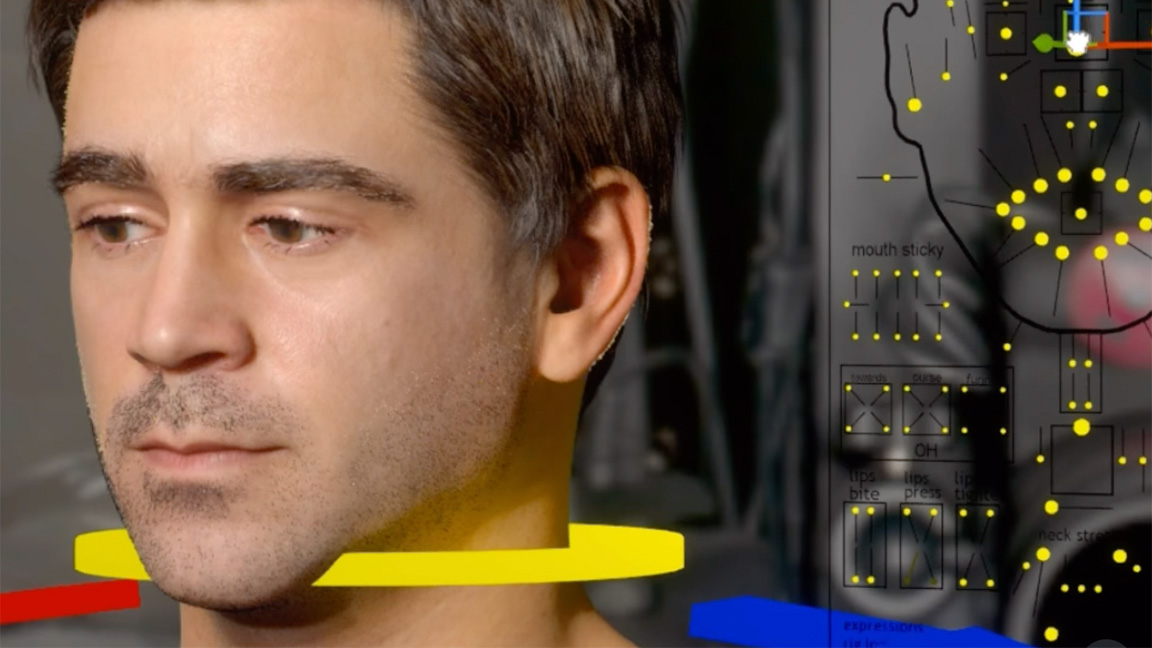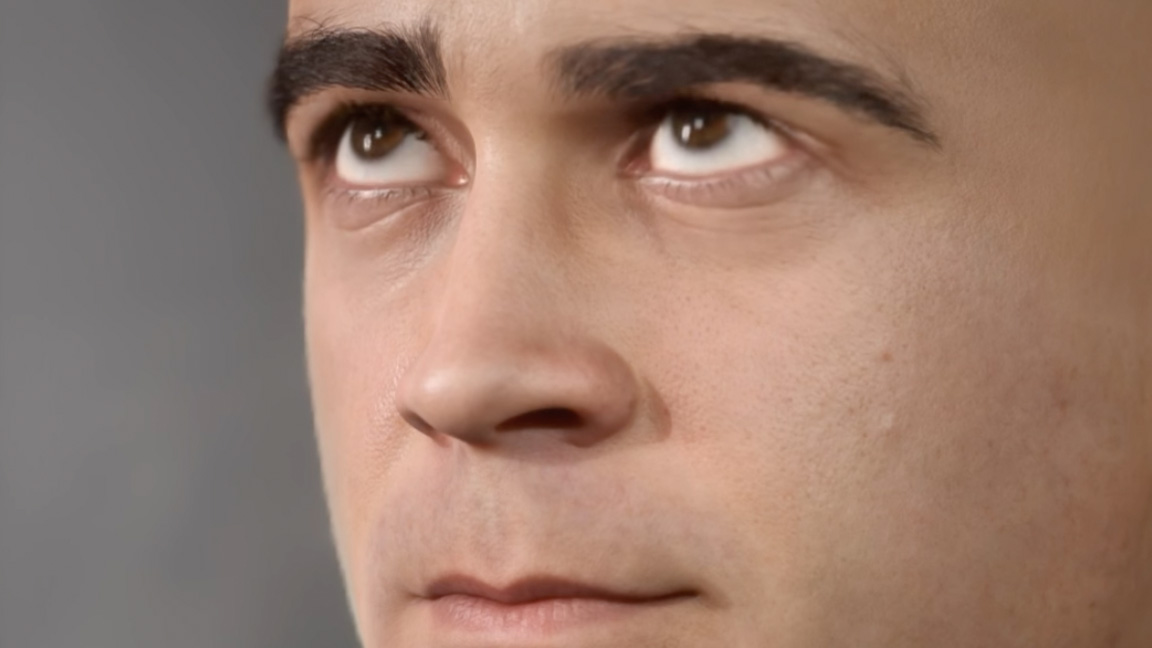
Somewhere between photorealistic ambition and uncanny dread, Natallia “BLU1304” Sudas has conjured a digital Colin Farrell so believable it unsettles. Halloween has definitely come early in her latest experiment, a real-time facial expression rig inside Unreal Engine 5, which feels less like a tech demo and more like a mirror that’s just a little off, a little uneasy.
Built using Unreal Engine, Sudas’s creation isn’t just a likeness of Colin Farrell; it’s a performance. The actor’s face moves with unnerving precision: subtle creases form, muscles tighten, and tiny shifts in the eyes suggest thought. This digital Farrell feels alive. Every twitch looks rehearsed and sentient, yet something in the motion keeps you on edge. It's like that moment Robocop's mask comes off, but now it's real.
The project pulls from cutting-edge texturing and scan data, using the best 3D modelling software, but its real power lies in how those technical layers are combined. Sudas clearly understands how human expression works, not just anatomically, but emotionally. It’s the smallest, half-hidden gestures that sell the illusion, and it's creeping me out.
Watch the animated, creepy Colin Farrell at the Instagram link below:
The beauty of being uncomfortable
That sense of discomfort is the hook. I stop watching because my brain insists it’s a living person, even as my gut knows it isn’t. The skin glows almost naturally, the eyes nearly focus, and it’s that infinitesimal gap between real and rendered that triggers something in my brain.
This is the uncanny valley, not as failure, but as an aesthetic choice. Sudas’s Farrell sits perfectly in that liminal space, celebrated in games like Dreamcore, where artistry meets eerie. We’re captivated because it feels wrong.
What makes this project so compelling isn’t its fidelity but its intent. It’s not showing off polygons or shaders, though it is; it’s exploring how digital humans make us feel. I feel this work almost functions like a short performance; Farrell’s face becomes a canvas for exploring identity, empathy, and even fear, as well as celebrating new technology.
I start to wonder whether the model knows it’s being watched. It’s only a simulation, but the illusion of self-awareness is so strong it borders on storytelling. I've watched this countless times, and it continues to draw me in with its realistic blinks and twitches.

What It means for digital artists
For 3D artists and creators, this is a quiet milestone. It reminds us that realism alone isn’t the goal, but instead the goal is to craft emotional precision. Sudas has shown that the future of digital humans won’t just depend on the best graphics cards, but on artists who understand how people emote, not just what they look like.
Maybe the secret to believability lies in embracing imperfection and not simply pushing technology: the slight twitch, the odd pause, the detail that doesn’t quite sync. I've tried new AI that can act and react in life-like ways, such as Nvidia ACE, but this feels different and more alive.
Sudas’s real-time Colin Farrell is a digital triumph and a performative draw. I find it's art disguised as a technical achievement that feels almost haunted, and very, very creepy. I watch, I flinch, then I look again, because somewhere between the impressive polygons and the detail, something stirs that looks suspiciously like life, and I can't take my eyes off it.

Follow Natallia “BLU1304” Sudas on Instagram for more updates and projects.







